
Dedicated to the Promotion and Preservation of American Muscle Cars, Dealer built Supercars and COPO cars. |
|
|||||||
| Register | Album Gallery | Thread Gallery | FAQ | Community | Calendar | Become a Paid Member | Today's Posts | Search |

|
|
|
Thread Tools | Display Modes |
|
|
|
#1
|
||||
|
||||
|
How exactly would they suppress noise?
They look like they would create it.  |
|
#2
|
|||
|
|||
|
Rick,
The "button" nests in the impression in the end of the spindle, and the sharp points make contact with the inside of the grease cap. As the hub rotates around the splindle it creates static interference in the air which is not grounded away very well due to the grease on the bearings. The grease cap transfers this static charge through the brass suppressors to the spindle, which is grounded to the chassis. All cars with factory installed radios since the late '50s had these installed. They were usually tossed the first time the front bearings were serviced. Verne |
|
#3
|
|||
|
|||
|
For 1967 Camaro, they-re shown in the AIM as item 3 on page U63-A1 -- 7276494 STATIC COLLECTOR ASM. Callout 'A' details installation in the hub.
A pair of these is included in NOS AM radio assemblies, along with another version of the same instructions as the AIM. |
|
#4
|
|||
|
|||
 -Very interesting Verne--Never saw one--Right out of Jules Verne -Very interesting Verne--Never saw one--Right out of Jules Verne |
|
#5
|
|||
|
|||
|
I have seen them on many original mid-year corvettes that I have restored. The corvettes had more problems with static noise because fiberglass will not insulate spark noise like sheet metal, thats why vettes had ignition shielding.
Rich. |
|
#6
|
||||
|
||||
|
Thanks for "enlighting" me,Verne.
 |
 |
|
|